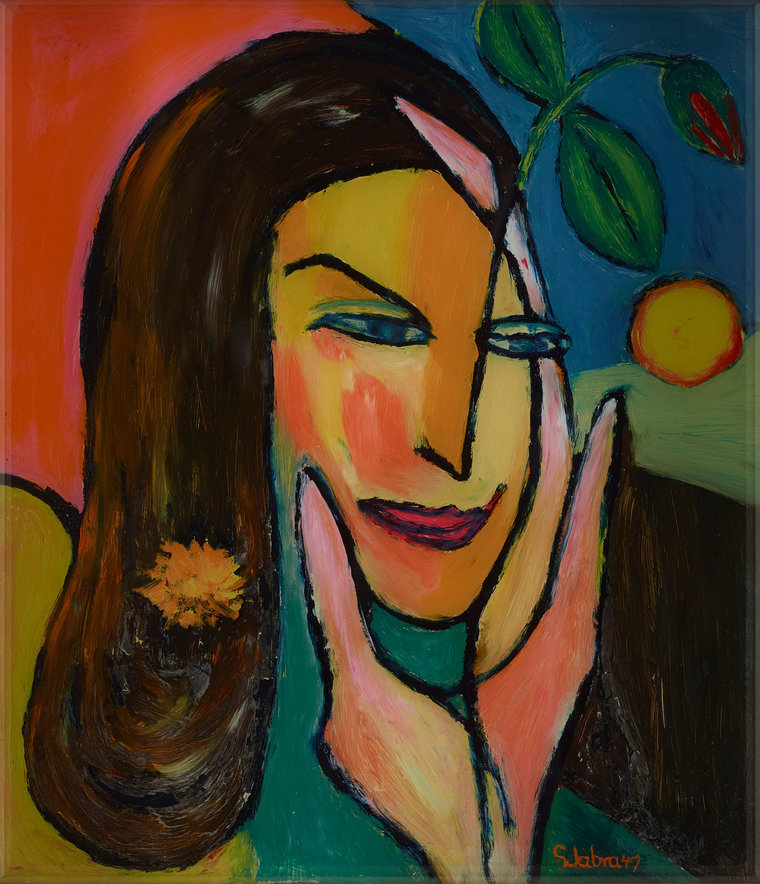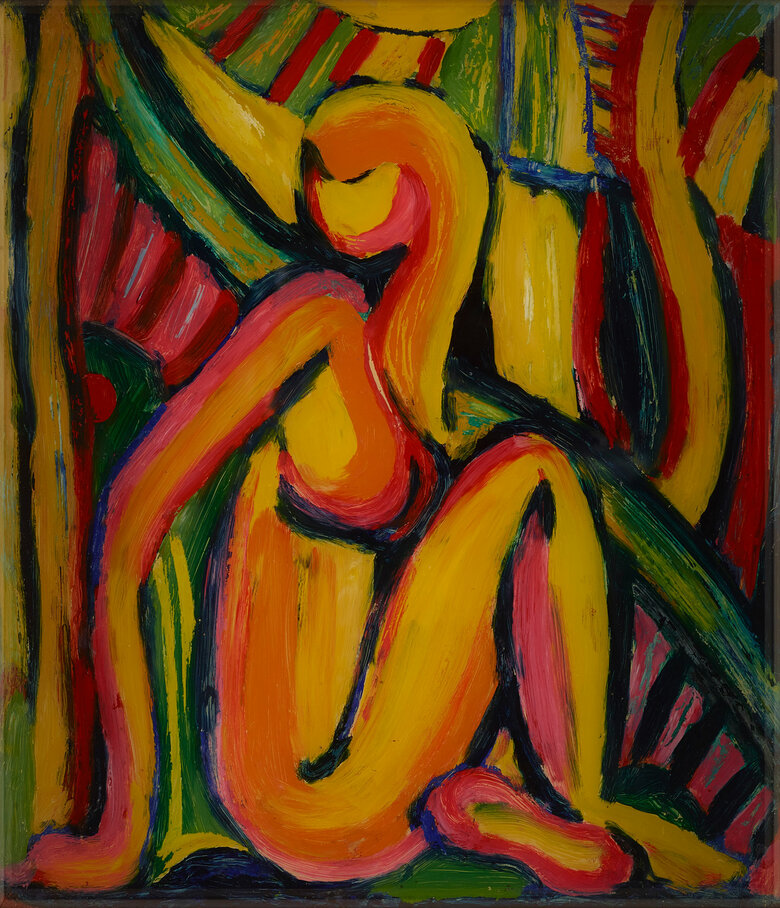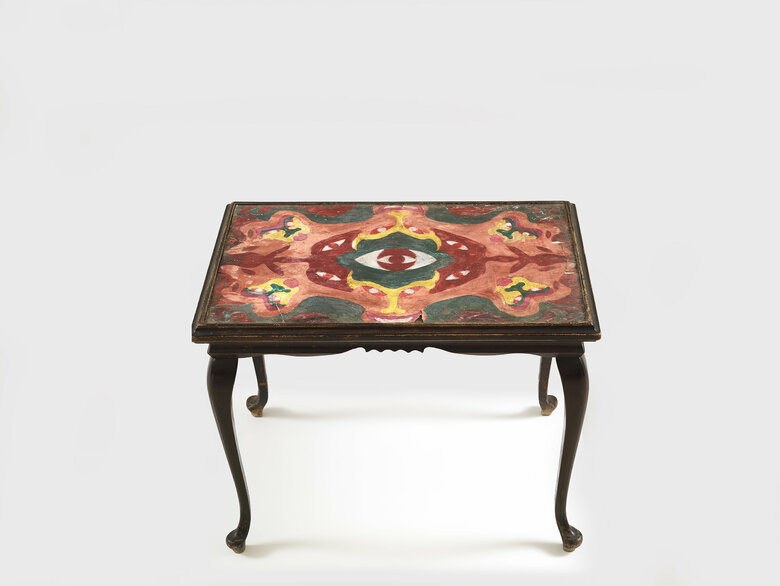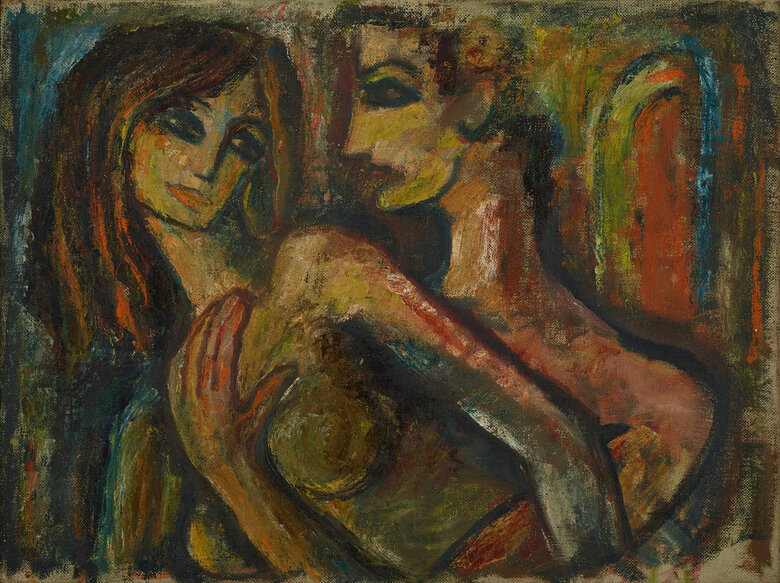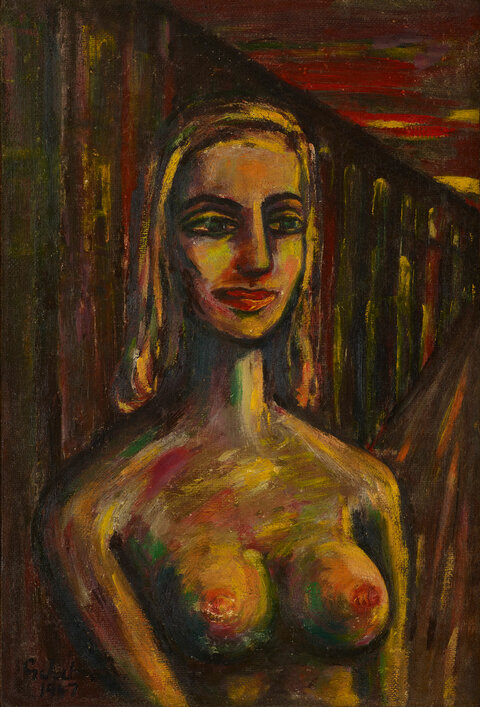Jabra’s Untitled, 1947, depicts a full-face portrait of a woman set against a colorful background. Located in the center of the painting’s composition, the woman has long, dark-brown hair; thin, narrow, blue eyes; and crimson-red lips; all delineated with a thick black contour. Her left cheek is ablaze with a bright orange hue painted in broad, patchy brushstrokes. Her sharp, lengthy nose extends beyond her forehead, to become the stem of a red bud carrying two green leaves. Nestled in her hair is an amber flower in full bloom. The woman seems to hold her face with her slender fingers, as she stares away from the viewer. The background, the woman is set in, consists of six flat shapes of varying colors, including red, blue, brown, olive green, emerald green, and lime green. There is also a small circle located at the upper right quadrant of the picture. The sphere, symbolic of the sun, is rendered in vivid yellow paint surrounded by an orange rim.
Jabra’s depiction of female figures is a recurrent theme in his work. As is for most Palestinian artists, Jabra’s woman is symbolic of the homeland. She is the barer of a future generation and a hope, as she is depicted as an extension of nature. In Untitled, she seamlessly merges with elements of the natural world. Her blue eyes are reminiscent of the color of the sky. Her hair is brown like the earth, while her hand is akin to a tree trunk with growing roots. She is both free and grounded, reflecting the inherent state of every Palestinian. Her face, painted in a yellowish orange, is also a reflection of the sun’s light.
This fauvist painting has a wistful atmosphere, while baring many contradictions. The artist has chosen simplified flat forms, painted with roughly applied brushstrokes. He further mixes saturated masses of colorful paint with black bold lines. The contrast is further enhanced through the juxtaposition of the pronounced lines and the soft curved shapes. Moreover, the difference in proportion between the miniature sun and the sizable facial features contributes to the painting’s mysticism. Jabra’s choice of medium also reflects a contradiction of both boldness and vulnerability. Using glass as a surface for his portraiture painting amplifies the woman’s beauty through the reflective nature of the material. Paradoxically, this same material is fragile, and represents a formidable challenge for oil painting.
A self-professed expressionist, Jabra created an emotionally evocative painting that aptly portrays the struggle of the Palestinian people. Through the contrasting elements of this artwork, the artist has depicted a struggle between hope and despair, as well as a longing to be rooted in a homeland. The glass painting portrays a beautifully intertwined world between nature and femininity. Jabra masterfully uses the female form to capture the mysterious interplay between reality and dreams, which he has stated to be the essence of art and life.

